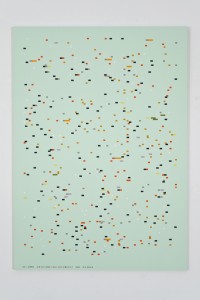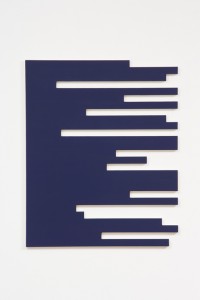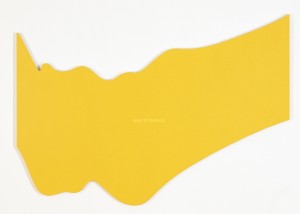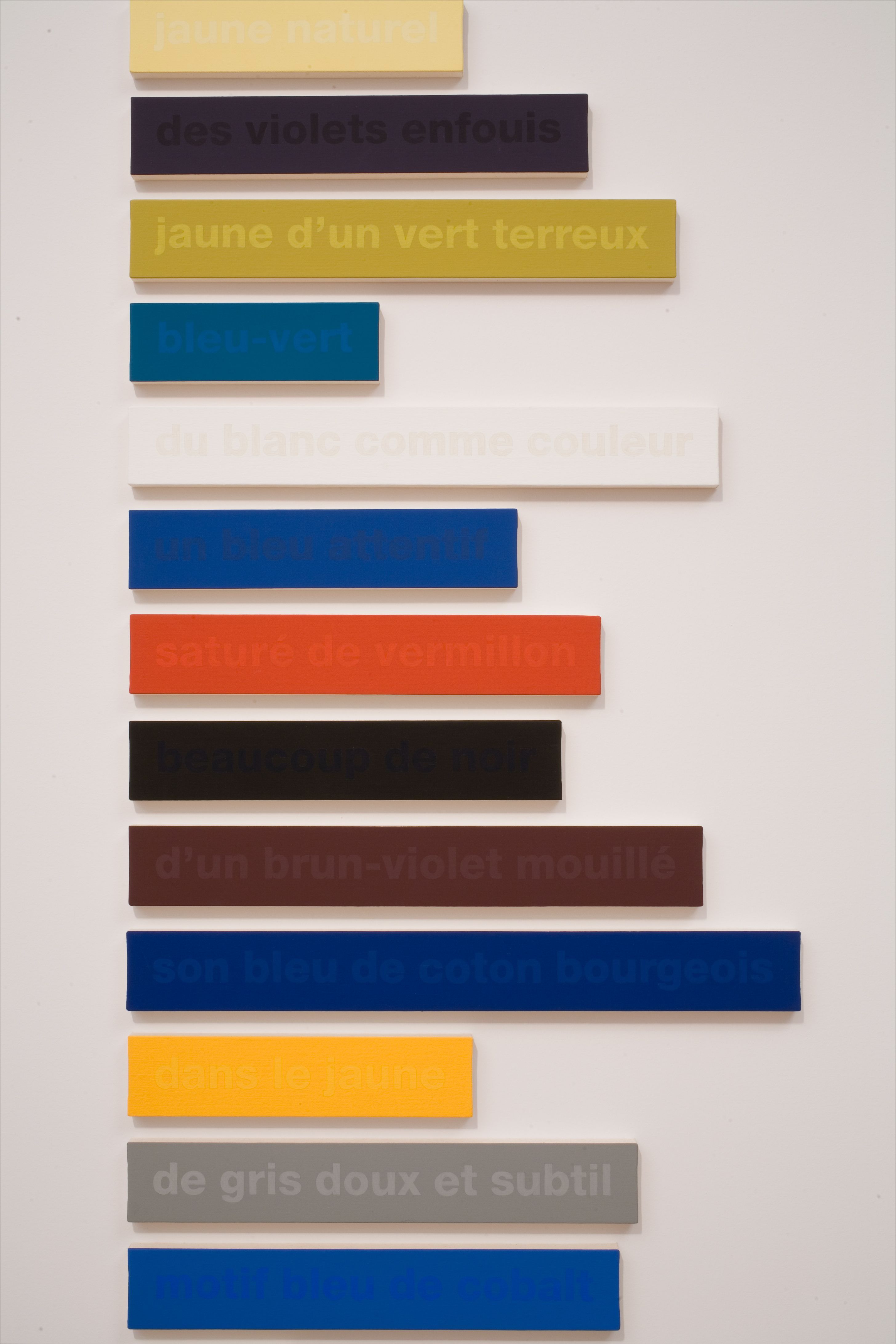My brain was buzzing when I left the Francine Savard mid-career retrospective at the Musee d’Art Contemporain de Montreal (MACM) curated by Lesley Johnstone. The 60 works on display express intellectual and philosophical ideas with such refined and graphic precision. Savard’s work, obviously drawing from the local tradition of Plasticiens (a non-figurative movement which began in the mid-1950s in Quebec and included Stella-like works from artists such as Guido Molinari, Claude Tousignant and Fernand Leduc), incorporates text, typography, colour and structure in a reflective way that encourages the viewer to rethink art history, geography, analysis and representation.
![Beyond the Canvas: Francine Savard at the Musee d'Art Contemporain de Montreal 1 Francine Savard, Le Dépôt de peinture [Deposit of Paint], Acrylic on plywood, 2000, Collection MACM, Photo: François LeClair](https://www.theartblog.org/wp-content/uploaded/Savard_05-229x300.jpg)
The Montreal-based artist and graphic designer has a mind for systematic analysis and translates the computer-like process of encoding and cataloguing into a visual medium. Savard often encodes texts, picking words (that, for example, reveal, substitute, specify, or connect) and then blacking them out to create a unique piece of art, as in the Partition Series (2007). By simply looking at works that use a similar process, like P = 8% (2006) and Sans problème, sans emploi (2009), the text and the process of analysis undertaken are not apparent. However, by incorporating familiar icons such as the punch card and defragmentation imagery, Savard implicitly reveals the analysis and showcases it for visual consideration in her works.


For me, Savard excels when turning art back on itself, or turning art criticism back into art. Examining two texts of art criticism about Plasticien painter Fernand Leduc, Savard extracted words used to describe the work of the non-figurative artist. Associating these words to shapes in Leduc’s paintings, she created her own shaped canvases with the words inscribed within them, as seen in Une Étendue jaune (2001). With this series Savard presents questions for consideration: Can language describe art? Or is it limited? What are we looking for in the shapes of a non-figurative artist? Similarly, in Les Couleurs de Cézanne dans les mots de Rilke 36/100 – Essai (1998), Savard extracts Rilke’s expressions used to describe the colours of Cézanne’s paintings and creates her own palette of expressions/colours. Savard thoughtfully encourages her audience to reconsider the viewing of art and its interpretation and the reception of the written review.


This worthwhile show leaves the viewer pondering greater questions of language, interpretation and classification. But with all its intellectual content, Savard’s retrospective is not without poetry. Her art pieces are the result of thoughtful meditation and the viewer can feel the considered quality of her work. In the final room of the show, a number of epigraphs (with words selectively omitted) from famous books form a wall of poetic snippets, moments of selective and personal inspiration. Throughout her oeuvre, Savard strongly emphasizes her consideration of text and structure, ultimately bringing her viewer beyond the canvas.
Francine Savard, along with the solo shows of both Tacita Dean and Tricia Middleton respectively, on at the Musee d’Art Contemporain de Montreal until January 3, 2010.


![Beyond the Canvas: Francine Savard at the Musee d'Art Contemporain de Montreal 6 Francine Savard, Cité en épigraphe […] par Yve-Alain Bois (Quoted as an Epigraph ... by Yve-Alain Bois), Acrylic on canvas mounted on fibreboard, 2008, Collection of the artist. Photo: G. L'Heureux](https://www.theartblog.org/wp-content/uploaded/Savard_10-300x200.jpg)




